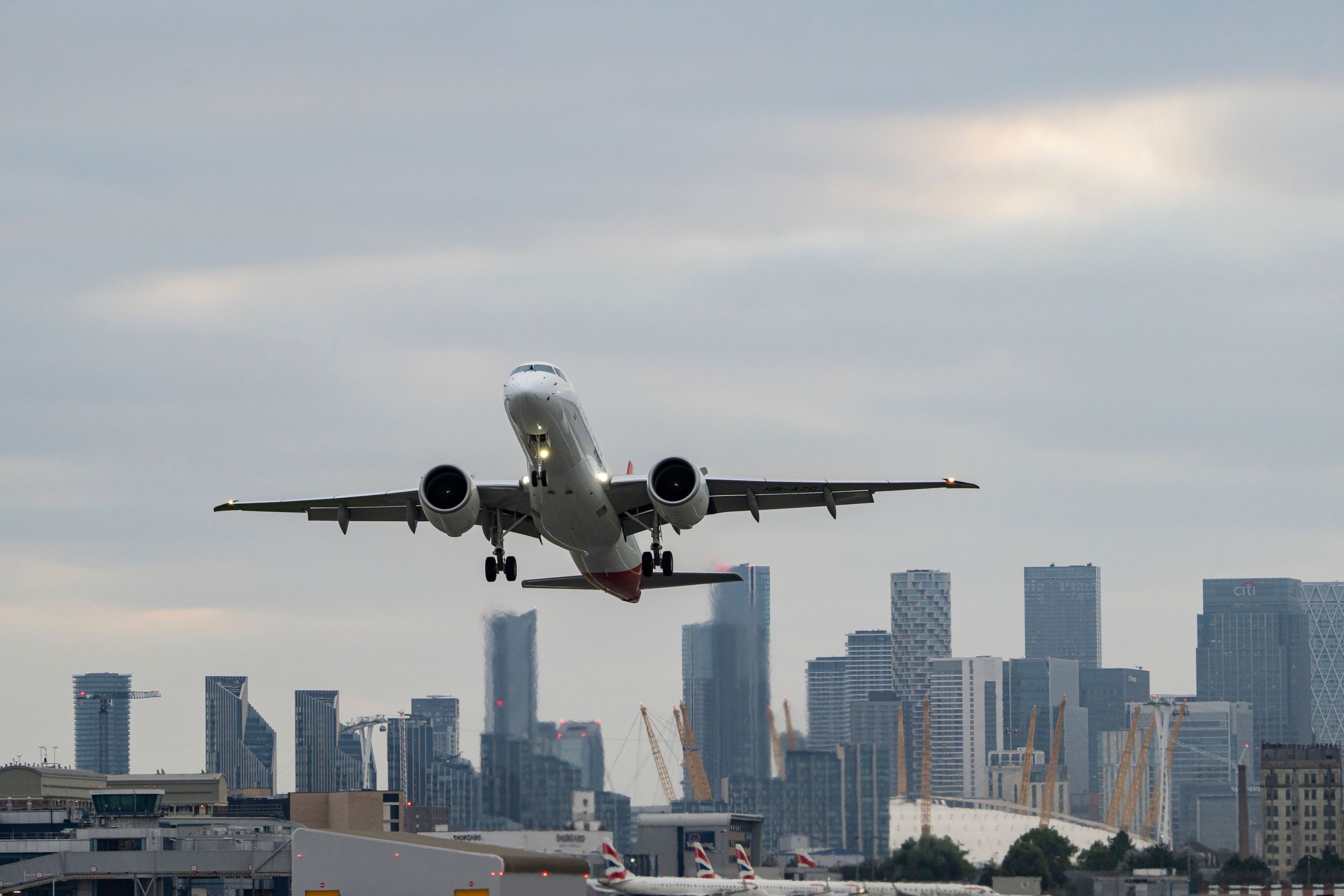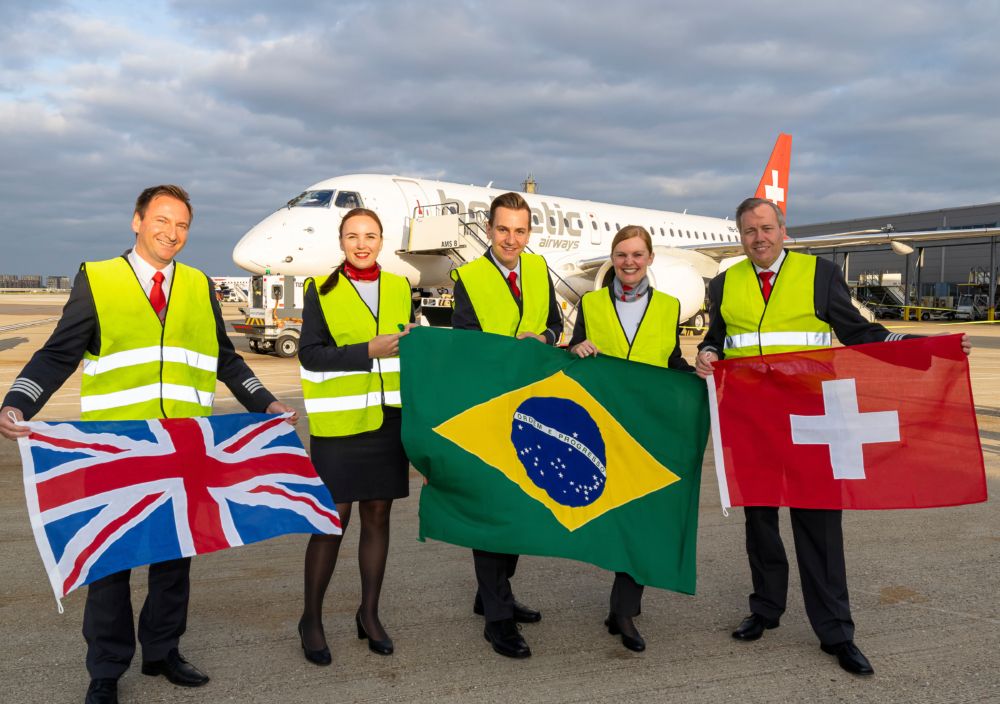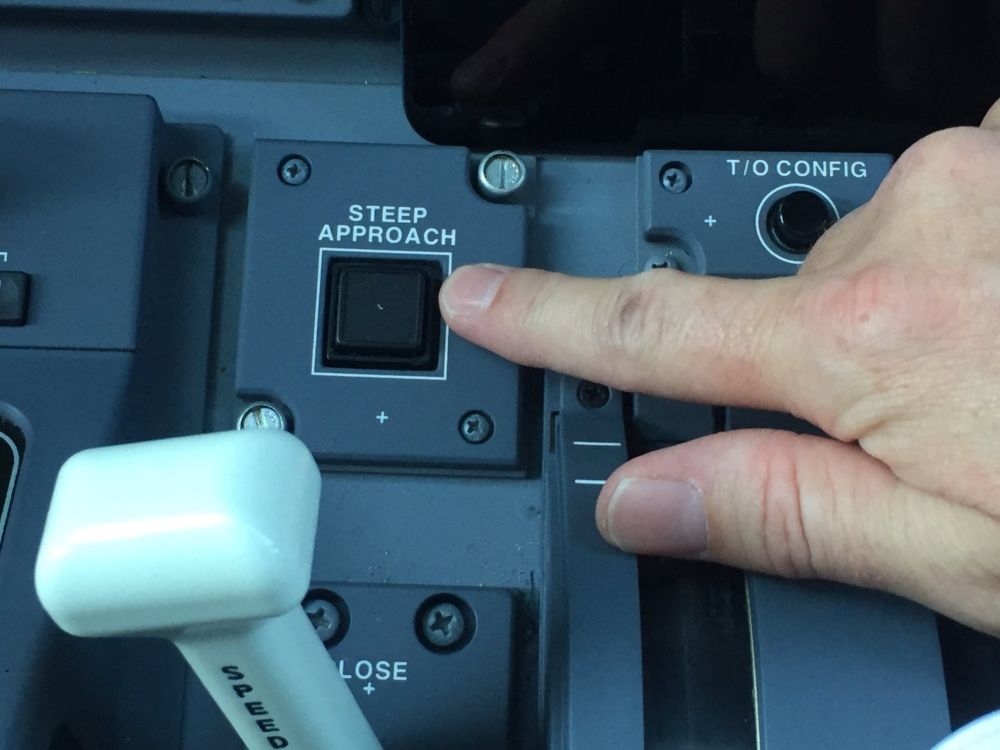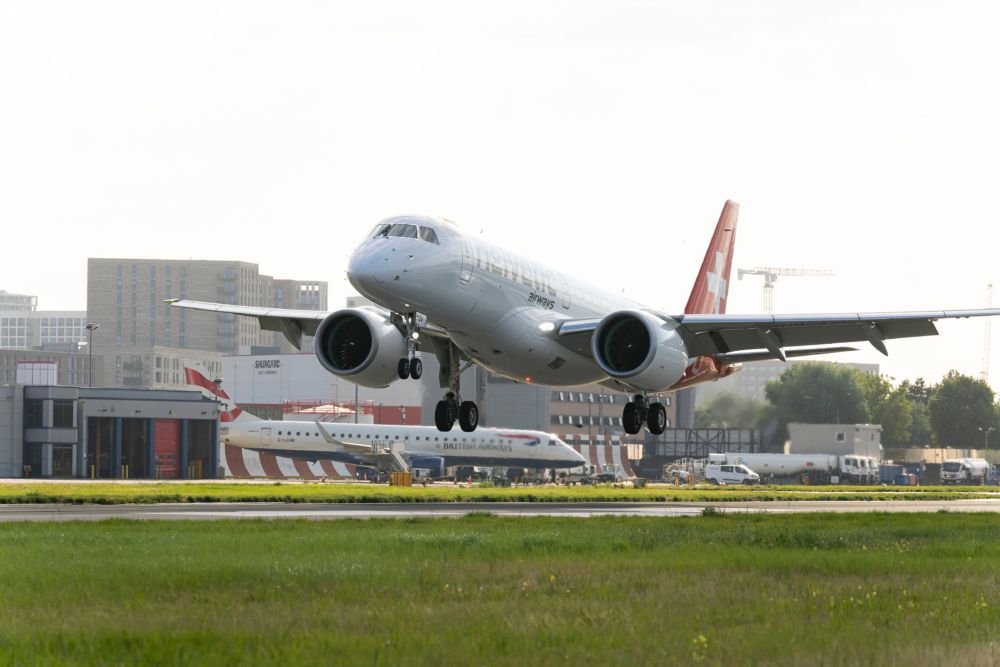Most airports have a fairly standard approach slope, usually at an angle of around three degrees. However, some airports require a steeper than usual approach, either due to obstacles or environmental nuances in the surrounding areas. London City is one such airport, but what does it mean to fly into LCY as a pilot?
Simple Flying spoke to Captain Mathias Kohler, Helvetic pilot and Chief of Flight Operations, who was charged with flying the very first commercial service of an E2 into London City. He gave us some perspective on the challenges of using this airport, noting,
“It is a challenge. The airport itself is challenging and it's a challenging environment. Environmental protection is a top goal in this very dense area of London City Airport. And so they decided to go with the concept of the steep approach.”
Why the steep approach at LCY?
The steep approach set out at London City Airport is for two reasons. Firstly, it reduces the prolonged low flying of aircraft on a typical airport approach, reducing the noise pollution for people living under the flight path. Secondly, it lowers the risks associated with landing in the proximity of so many obstacles like the tall buildings on the approach path.
For the pilots, this means additional training, and an aircraft that has been modified to accommodate the unique configurations required to land at this airport. Kohler explained,
“It's very complicated. From the pilot’s perspective, it is special and needs special training. It needs special certification for the aircraft itself and also needs special approval by the airport. So these are the three components.”
For an airline like Helvetic, London City Airport is unique in this steep approach requirement. However, the technical certification of the Embraer E190-E2 means the aircraft is capable of performing an approach of up to 5.5 degrees at any airport in the world. At present, London City is the only commercial airport in Europe with this requirement, but it does mean the aircraft can operate at other airports with approach slopes greater than the typical 3.0 degrees.
The modification for the aircraft was a simple ‘steep approach’ switch. This switch notifies the fly-by-wire system that the pilot intends to perform a steep approach, and unlocks certain configurations in the flaps and wingtop spoilers to allow speed to be maintained on the approach to the airport.
What’s in a couple of degrees?
A difference of three degrees to five degrees might not sound like much, but given the speeds and elevations involved in flying a jet plane, it makes a world of difference. Captain Kohler explained,
“The difference is, when you look at the usual approach, which is around three degrees steep, it gives you a certain rate of decent at a certain speed - around 800 feet per minute. The approach starts at around eight miles away from the touchdown point.
“When you look at London City Airport with the steep approach of 5.5, this gives you another challenge - the high rate of descent and the very short final approach. We talk about three miles away from the threshold which gives you a descent rate of about 1,000 to 1,200 feet per minute. This is quite different compared to 800 feet per minute with the usual three-degree approach.”
The pilots are trained to accommodate this shorter approach and more rapid descent, but the aircraft has its part to play too. Approaching a runway that is surrounded by water and relatively short means pilots need excellent visibility at all times, and the Embraer E2 has been set up to deliver just that. Kohler noted,
“When you look at the aircraft itself, it has more technical assistance. Embraer managed to help with the steep approach functionality, which is with full flaps configuration in order to maintain the speeds during this high rate of descent, and the spoiler deflection on the upper surface of the wing to maintain the speed. This gives you almost the same attitude as a normal descent, and good visibility of the airport.
“It's a feature of the fly by wire system. It's intentional that the aircraft performs this steep approach with almost the same attitude and flight characteristics and behavior as you do on any other descent.”
At present, Helvetic has a pool of around 140 pilots, and all but the most recent recruits are trained to fly into London City. The airline’s goal is to have 100% of its crew trained on London City operations, positioning itself as a key wet lease capacity provider into this very convenient city center airport.




